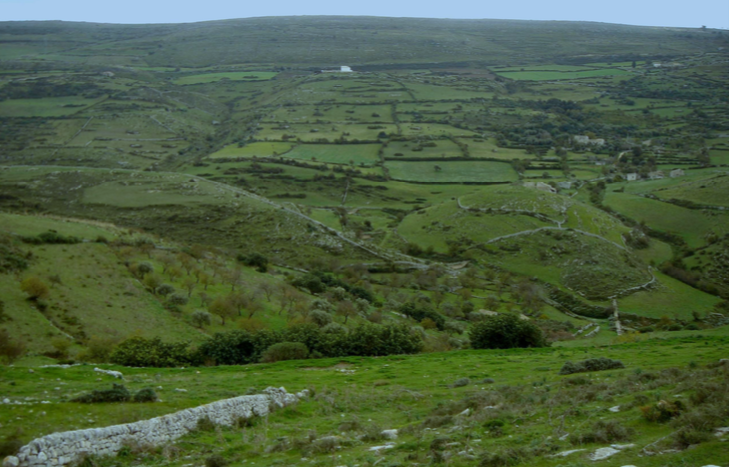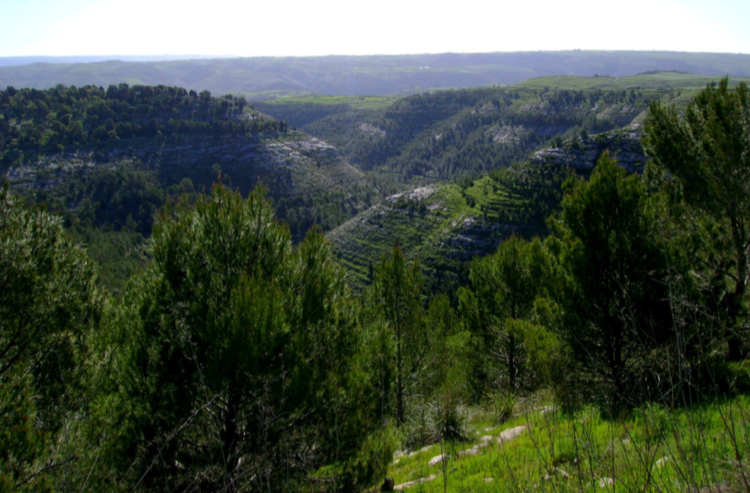
Hybleian Caves
This post is also available in:
 Italiano (Italian)
Italiano (Italian)
The Hybleian Plateau is a rock formation located in the south-eastern part of Sicily, which includes the municipalities of Ragusa, Siracusa, and a small portion of Catania. It mainly features deep V-shaped valleys called “caves”, mostly perpendicular to the coasts and hit by the non-stopping corrosive and erosive action of the atmospheric and fluvial agents – such erosion has created a natural and peculiar landscape of impressive beauty.
The “Hybleian Caves”, secluded and seldom visited, are, nonetheless, real corners of paradise, rich in vegetation, with interesting flora and fauna, also featuring rare and particular species, little streams, small water sources, cliffs, overhangs, and real caves which used to be completely underwater. In the same area, there are also mills and old stone farmhouses: some of them have been recently restored, while some others are just engulfed by the thick vegetation.
Among the most beautiful locations, there are “Cava Grande” in the Manghisi Valley (the upper valley of the Anapo River), the valleys of Calcinara, Irminio, Tellaro, Asinaro, and the smaller quarries of San Marco, S. Lio, Cardinale, Cugno Marino, Cava Bagni, and Cava del Signore.
In 2018, the “SOUTH” Cultural Association created the “Circuito delle Cave Iblee” network (“IVC – Hybleian Valleys Circuit”), which involves 10 partners among public and private entities, such as the local Department of Tourism, the Sport and Entertainment Department of the Regional Administration, etc. This project is aimed at enhancing naturalistic tourism within the municipalities of Ragusa, Modica, Scicli, Ispica, and Rosolini; for instance, visits and promotional tourist packages during the low season are also offered online.
The Flora of the Iblee Quarries
Thanks to humidity coming from several waterways and the mild local climate, the vegetation of the quarries appears luxuriant, rich in biodiversity, and often thick and impenetrable. It is made of rather extensive oak forests, although they are constantly hit by fires and they are not protected at all. The low-stemmed Mediterranean scrub that grows on the walls of the quarries, features small oaks, hawthorn (Crataegus oxyacantha), Cistus incanus, Phlomis fruticosa, Salvia triloba, and Calicotome infesta; the riparian and submerged vegetation of the rivers includes trees such as Platanus orientalis, Salix pedicellata, Populus nigra, and Populus alba, as well as shrubs and vines like elderberries (Sambucus nigra), oleanders (Nerium oleander), myrtles (Mirtus communis), and Clematis vitalba. There are also some perennial species and ferns including Equisetum ramosissimum, Solanum dulcamara, Dryopteris felix-mas, Adiantum capillus veneris, and hygrophilous species such as Sparganium erectum, Tipha latifolia, Putoria calabrica, Elicrisum scandens, Dianthus carthusianorum, and Capparis spinosa, as well as abundant Euphorbia L. on the rocky cliffs.
The complete list of the flora of the Quarries and the entire Hyblean District is available at:
https://digilander.libero.it/pantalica/Anapo/flora.htm
http://cambriasalvatore.wixsite.com/flora-della-sicilia/distretto-ibleo
This post is also available in:
 Italiano (Italian)
Italiano (Italian)
Contatti
Circuito delle Cave Iblee, via Roma 10, p.1° Ispica (RG) - Castiglione Ragusa(RG)
0932 793279
m.me@circuitodellecaveiblee.it


